General News
Best Paper: CANDAR 17
Best Paper: ESPM2 2017
Air Quality & U, Empowering Citizens through Science
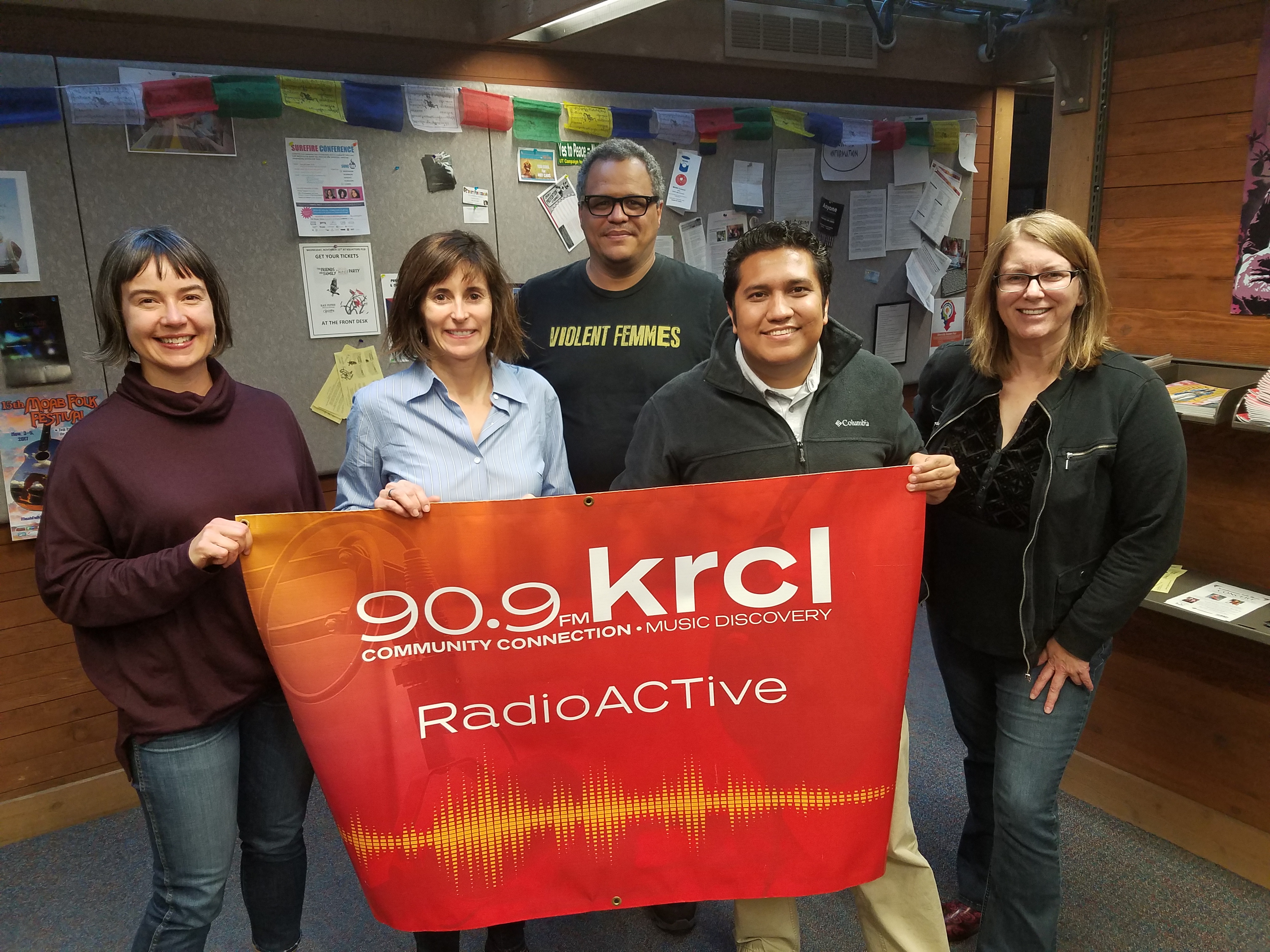 Miriah Meyer and Kerry Kelly talk with KRCL's RadioActive, hosted by Billy Palmer and Lara Jones, on Air Quality and You: Empowering Citizens Through Science.
Miriah Meyer and Kerry Kelly talk with KRCL's RadioActive, hosted by Billy Palmer and Lara Jones, on Air Quality and You: Empowering Citizens Through Science. Low-cost commodity sensors are changing how cities and citizens measure and manage air quality. Through a suite of projects at the U we are building infrastructure that will enable real-time, fine-grained estimates of air quality both inside and outside of homes across Salt Lake City. In this presentation we’ll talk about the science of air quality, the computational challenges of developing rigorous air quality estimates, and our efforts to engage with citizens across the city.
Listen to the discussion on RadioActive
Valerio and Kree Receive IEEE Visualization 15 Year Test of Time Award
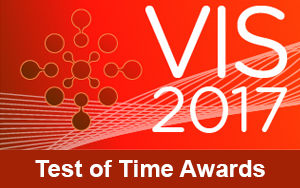 Congratulations to Valerio Pascucci and Kree Cole-McLaughlin on receiving the IEEE Visualization 15 Year Test of Time Award for their paper "Efficient computation of the topology of level sets."
Congratulations to Valerio Pascucci and Kree Cole-McLaughlin on receiving the IEEE Visualization 15 Year Test of Time Award for their paper "Efficient computation of the topology of level sets."Using topological approaches to analyze level sets from scalar field has been an important branch of methods in the SciVis community. While the theories of contour trees had been known prior to this paper, efficient and robust computation of contour trees and other topological features from a discrete data set has been a challenge. In this paper, the authors provided a detailed account of the implementation of contour tree computation. The improved efficiency and the enhanced feature namely the Betti number makes the topological approach more practical and accessible to the scientific community. Considering the citation counts, the importance of the work, and the potential impact to the application areas, the SciVis Test of Time award committee selected this paper as the 2002 SciVis Test of Time award winner.
2017 NERSC Award for Innovative Use of HPC
https://www.nersc.gov/news-publications/nersc-news/nersc-center-news/2017/nersc/
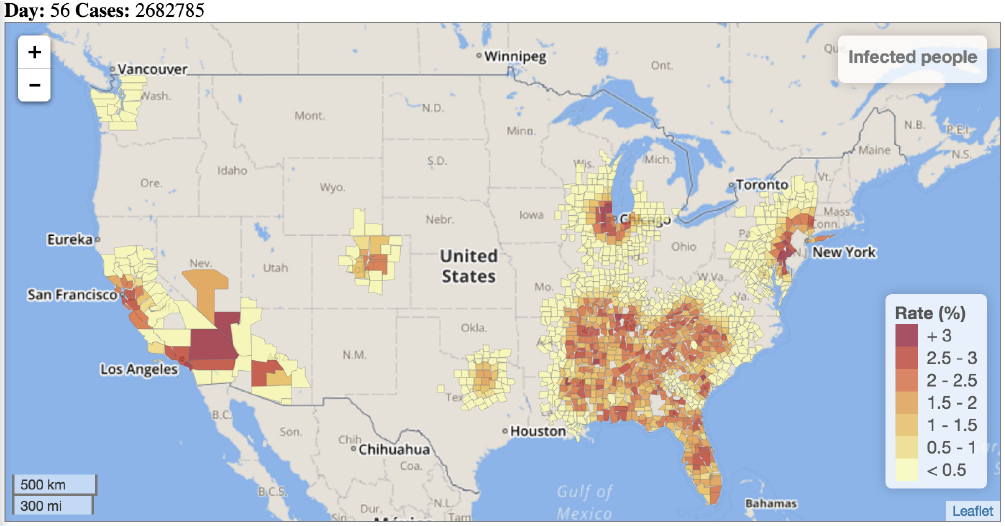
Driving Visualization at the SH/EAHP Workshop 2017
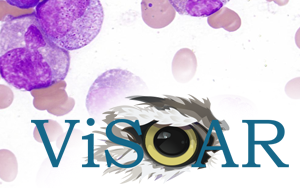 ViSOAR is set to drive the visualization for the 2017 Workshop on Molecular Genetics of Hematopoietic Neoplasms, September 7-9, in Chicago, IL.
ViSOAR is set to drive the visualization for the 2017 Workshop on Molecular Genetics of Hematopoietic Neoplasms, September 7-9, in Chicago, IL.The Scientific Computing and Imaging (SCI) Institute and the Center for Extreme Data Management, Analysis, and Visualization (CEDMAV), in collaboration with ARUP Laboratories and the University of Utah, Department of Neurobiology and Anatomy, have developed ViSOAR--a multi platform visualization application for accessing and processing very large imaging data.
SCI Acquires Nvidia DGX-1
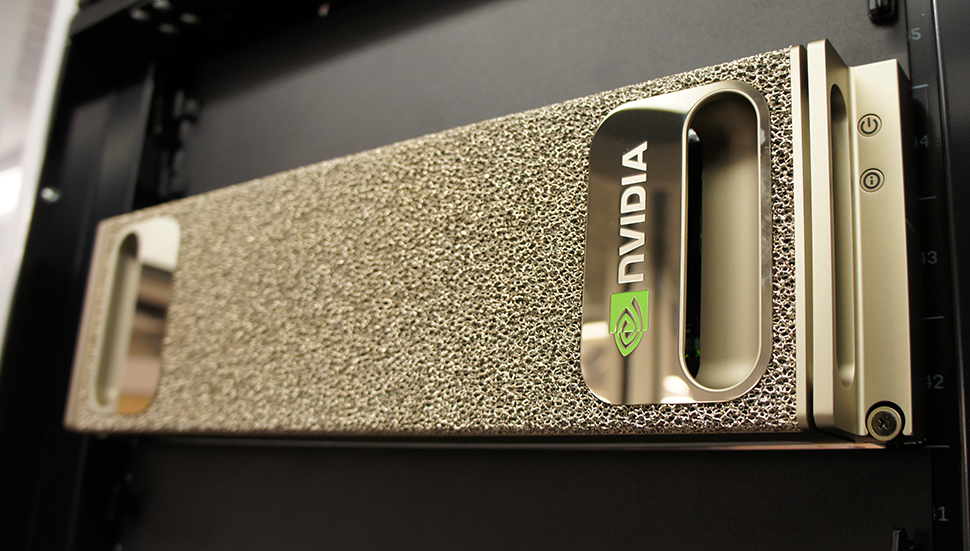 The SCI Institute, in partner with the School of Computing, is excited to announce the acquisition of an Nvidia DGX-1 deep learning system. This will be a shared resource that will be made available freely to all campus researchers interested in deep learning, machine learning and related areas.
The SCI Institute, in partner with the School of Computing, is excited to announce the acquisition of an Nvidia DGX-1 deep learning system. This will be a shared resource that will be made available freely to all campus researchers interested in deep learning, machine learning and related areas.Big data and machine learning are major factors shaping research and innovation now and will continue to be so in the foreseeable future. Deep learning represents the state-of-the-art in machine learning and data analysis.
Miriah Meyer Interviewed at Women in Data Science 2017
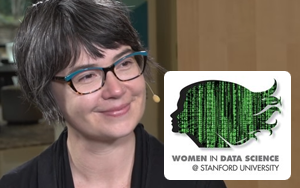 Miriah Meyer, Assistant Professor of Computer Science at University of Utah, sits down with host Lisa Martin at Women in Data Science 2017, at Stanford University in Palo Alto, California.
Miriah Meyer, Assistant Professor of Computer Science at University of Utah, sits down with host Lisa Martin at Women in Data Science 2017, at Stanford University in Palo Alto, California.
Combating Wear and Tear
University of Utah bioengineers detect early signs of damage in connective tissues such as ligaments, tendons and cartilage
By the time someone realizes they damaged a ligament, tendon or cartilage from too much exercise or other types of physical activity, it's too late. The tissue is stretched and torn and the person is writhing in pain.But a team of researchers led by University of Utah bioengineering professors Jeffrey Weiss and Michael Yu has discovered that damage to collagen, the main building block of all human tissue, can occur much earlier at a molecular level from too much physical stress, alerting doctors and scientists that a patient is on the path to major tissue damage and pain.
Early Science Projects for Aurora Supercomputer Announced
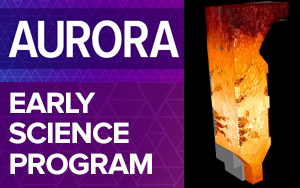 Congratulations to Martin Berzins and the Carbon-Capture Multidisciplinary Simulation Center on their selection as one of ten computational science and engineering research projects for its Aurora Early Science Program starting this month. Aurora, a massively parallel, manycore Intel-Cray supercomputer, will be ALCF's next leadership-class computing resource and is expected to arrive in 2018.
Congratulations to Martin Berzins and the Carbon-Capture Multidisciplinary Simulation Center on their selection as one of ten computational science and engineering research projects for its Aurora Early Science Program starting this month. Aurora, a massively parallel, manycore Intel-Cray supercomputer, will be ALCF's next leadership-class computing resource and is expected to arrive in 2018.
Laura Lediaev wins the Utah Rendering Competition for the 3rd straight year
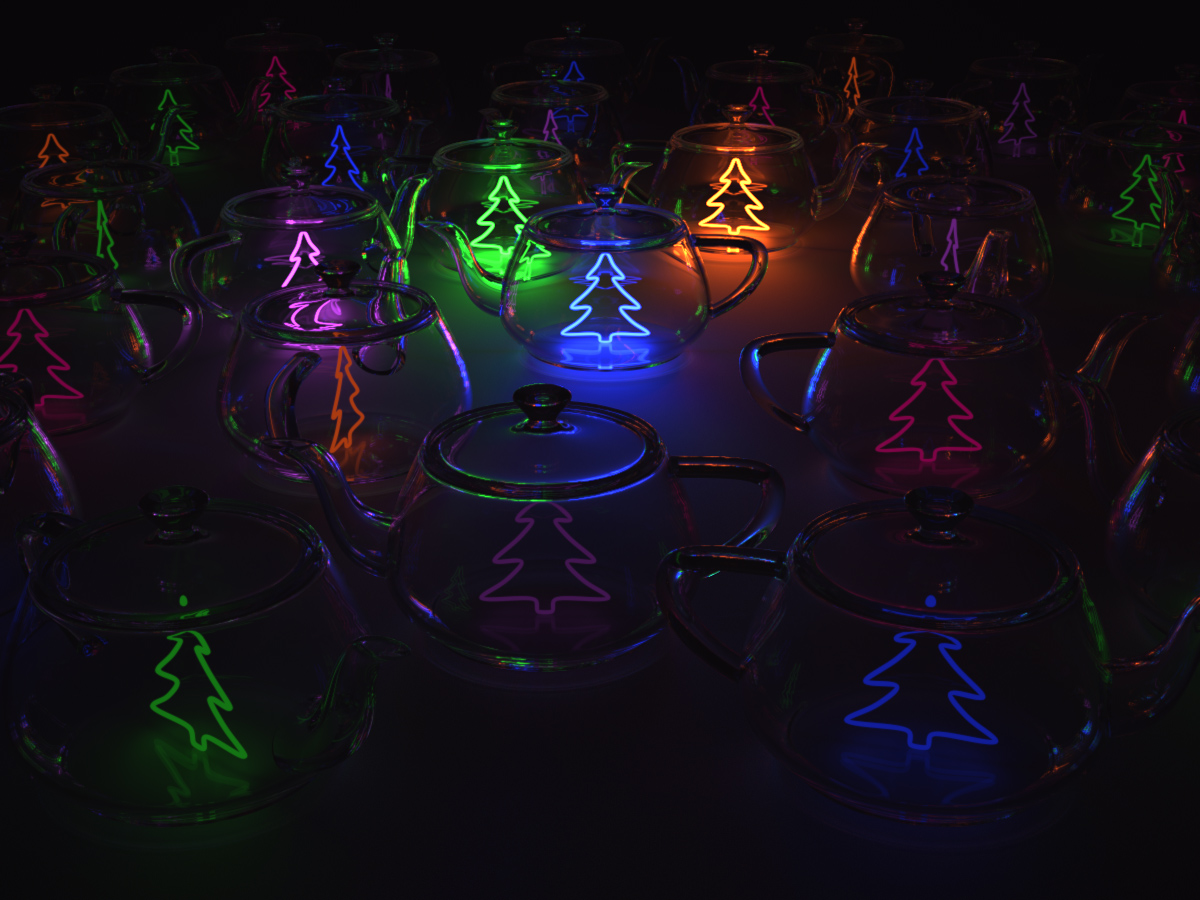 Congratulations to Laura Lediaev, who won the Utah Rendering Competition for the third year in a row. Laura's entry, titled Christmas Teapots, was the overall winner and receiver of the audience choice award. The rendering is based on creating time-varying composites of light layers in order to simulate the effect of twinkling Christmas lights and flickering candles. The scene has 30 lights, one inside each teapot. Light layers are created during rendering by saving the contribution of each light into its own image. This produced 30 images/layers. Each light produced 4,000 samples per pixel. That adds up to 120,000 samples per pixel after compositing. Laura allowed up to 10 diffuse light bounces and 200 specular bounces.
Congratulations to Laura Lediaev, who won the Utah Rendering Competition for the third year in a row. Laura's entry, titled Christmas Teapots, was the overall winner and receiver of the audience choice award. The rendering is based on creating time-varying composites of light layers in order to simulate the effect of twinkling Christmas lights and flickering candles. The scene has 30 lights, one inside each teapot. Light layers are created during rendering by saving the contribution of each light into its own image. This produced 30 images/layers. Each light produced 4,000 samples per pixel. That adds up to 120,000 samples per pixel after compositing. Laura allowed up to 10 diffuse light bounces and 200 specular bounces.For more information on the project, visit http://www.omnigraphica.com/classes/cs6620/contest2016.html




